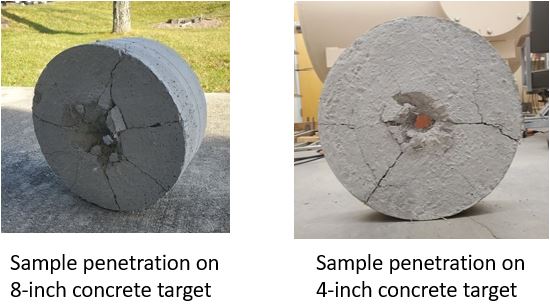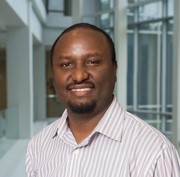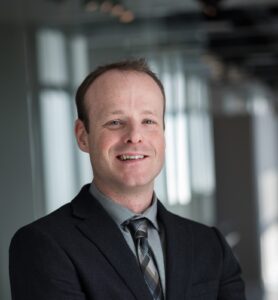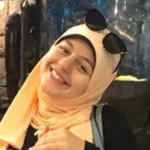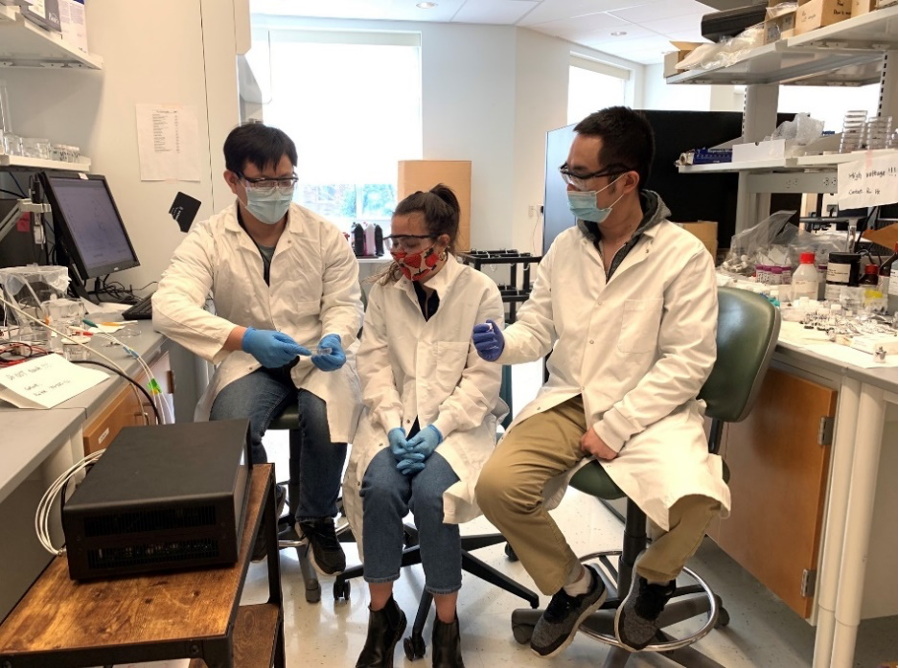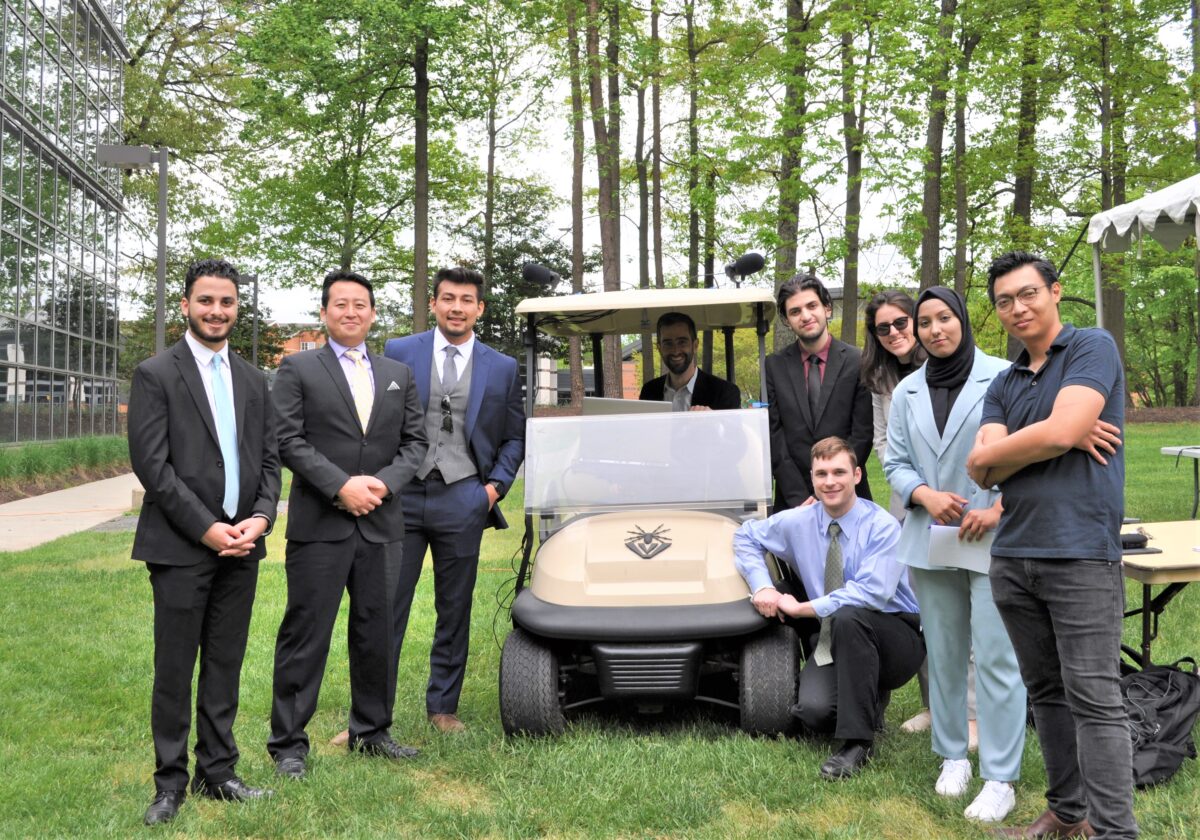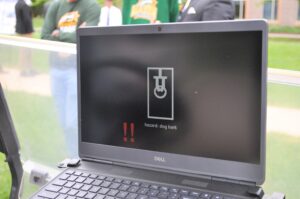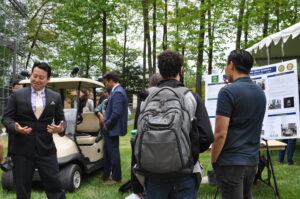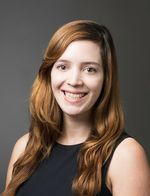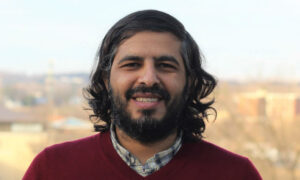Ornithologists, ecologists, environmentalists in the Mason Nation, and many others will welcome the findings of one of the most expansive survey-based studies to date designed to reduce avian window collision mortality. Avian window collisions are a national concern, with estimates of avian mortality between 300 million to one billion birds every year in the United States. The investigation, conducted over the past 12 months on multiple Mason campuses, was led by Biology Professor Daniel Hanley and his co-PI David Luther, with support from collaborator John Swaddle at William and Mary. Most significantly, the study has identified a critical factor — the gloss of the windows – as playing a significant role in avian window collisions and is the first research of its kind to make this important link.
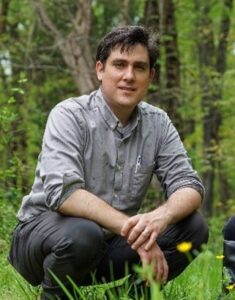

The study was funded with a grant from 4-VA@Mason, as part of 4-VA’s commitment to help launch pilot explorations which support collaborations of faculty in higher education throughout the commonwealth. The 4-VA research also encourages opportunities for student research that can make a positive difference for Virginia and beyond.
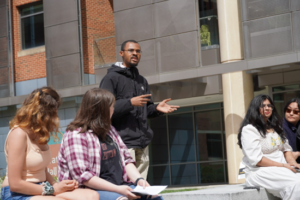
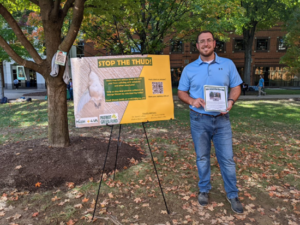
Hanley explains, “Through a large-scale Mason community effort, we conducted one of the most comprehensive investigations on this subject. We completed 3,415 surveys across multiple Mason campuses — 3,017 on the main Fairfax campus alone — and found 82 total fatal collisions, with 62 at the Fairfax campus.” The surveys were undertaken by a team of more than 40 volunteer undergraduate students under the direction of graduate students Quentin Jamison and Shawn Smith.
“On our Fairfax campus, the strikes were not clustered in any particular area. Instead, we found that certain buildings were more problematic than others. Not surprisingly, buildings with greater glass coverage experienced more fatal window strikes, as this has been documented before,” notes Hanley.
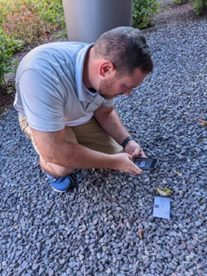
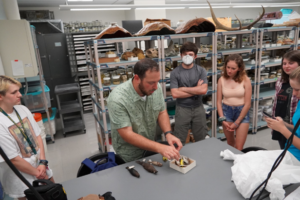
The researchers recorded the abundance of window strikes within the campus interior. Horizon Hall and Southside posed the greatest risk on the Fairfax campus, however, Exploratory and Thompson Halls also had a large number of strikes.
The core of the study considered the reflective properties of windows on 34 buildings as well as the proportion of glass on each side of these buildings. The team implemented a model to determine which factor could predict the count of fatal avian window strikes. “We used high-end glossmeters — Rhopoint IQ — to quantify the degree to which the glass reflects light and images to on-coming birds. There have been very few studies that have experimentally measured these features of glass. Therefore, our study provides a critical baseline for future endeavors in this field,” says Hanley.
The team coordinated with Mason Facilities, the Patriot Green Fund, and other interested parties. Further, they aligned with researchers and students at Virginia Tech, Radford, Bridgewater College, and William & Mary who are tracking fatal window collisions on their campuses. Additionally, outside organizations including the Virginia Master Naturalists and the Virginia Chapter of The Wildlife Society participated. Through this 4-VA supported research, PIs Hanley and Luther aim to greatly reduce window strikes throughout Mason campuses.
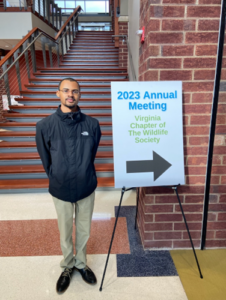
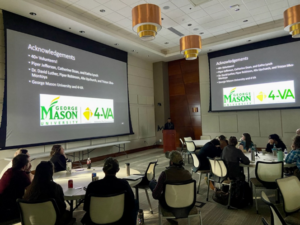
Graduate student researcher Jamison presented preliminary study results at the annual winter meeting of the Virginia Chapter of the Wildlife Society and, as a result, the group is now building a consortium on causes of window strikes and methods of reduction among researchers at the other universities in Virginia. Jamison presented at the American Ornithological Society conference in Ontario, Canada this summer as well.
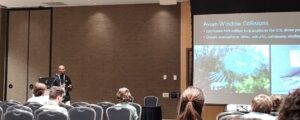
There’s more to come. “We have a draft manuscript on the topic, in collaboration with Dr. Swaddle from William and Mary, which will be submitted to a peer reviewed journal later this year,” notes Hanley. “We are now focusing on the sensory perception aspect of avian vision and understanding how birds see the glass (or not) while flying in order to design methods to make the glass more obvious to the birds so that collisions are reduced.” This research could result in external funding from energy companies and developers to install avian collision avoidance systems on their infrastructures — wind turbines, power lines, transformers, and buildings.
More than forty undergraduate students participated on the project, including: Aaidah Nizumudeen, Aaron Amin, Aaron Morton, Alexander Perez, Amal Ahmad, Ari Masters, Carolina Sanabria, Caroline Tate, Caty McVicker, Chloe Fowler, Deena Chouf, Eatha Lynch, Elham Sarangi, Emily Le Bron, Grace Rapoza, Grace Shimizu, Holly Haw, Hye Jeong Kim, Jessica Winey, Jordan Bertaux, Jordan Davis, Kaitlyn Moore, Kate Mateyka, Katie Russel, Kennedy Ream, Kiersten Jewell, Maddy Gonzalez, Merri Collins, Mohammad Alaadhab, Morgan O’Donnel, Natali Walker, Nibal Negib, Nimra Kashif, Quinn Griffin, Raina Saha, Ruth Leilago, Sameer Jame, Sara Abarra, Sarah Weikel, Trent Gasso, and Zahra Slimani.
Virginia Tech undergraduate students Madeline Alt and Rachel Morse also shared expertise from years of surveys on their campus.
“We couldn’t have pulled all this together without the 4-VA@Mason funding,” concludes Hanley. “This was a significant undertaking, and we needed the time and space to get this done right. We believe this is just the beginning of what we hope will be a turning point in reducing avian collision mortality.”




 With the preliminary findings, faculty and student researchers then designed and organized a Fall 2022 workshop titled “Renewal and Resilience: A Community of Student Activists,” which featured student activists fighting for food security, prison reform, racial justice, voting rights, LGBTQ rights, and gun control at Mason, Virginia Tech, and Virginia Commonwealth University. Following the student activist panel, Castle presented “Regenerating the Self,” encouraging participants to assess their well-being with the help of a self-care workbook. Participants were also encouraged to create their own maintenance plans to help in times of stress. Lisa Porter concluded the program by sharing an interview with Crimson Solano, a community leader of Harrisonburg-based Comité Salvadoreño Paisanos Unidos, a pro-immigrant policy advocate group.
With the preliminary findings, faculty and student researchers then designed and organized a Fall 2022 workshop titled “Renewal and Resilience: A Community of Student Activists,” which featured student activists fighting for food security, prison reform, racial justice, voting rights, LGBTQ rights, and gun control at Mason, Virginia Tech, and Virginia Commonwealth University. Following the student activist panel, Castle presented “Regenerating the Self,” encouraging participants to assess their well-being with the help of a self-care workbook. Participants were also encouraged to create their own maintenance plans to help in times of stress. Lisa Porter concluded the program by sharing an interview with Crimson Solano, a community leader of Harrisonburg-based Comité Salvadoreño Paisanos Unidos, a pro-immigrant policy advocate group.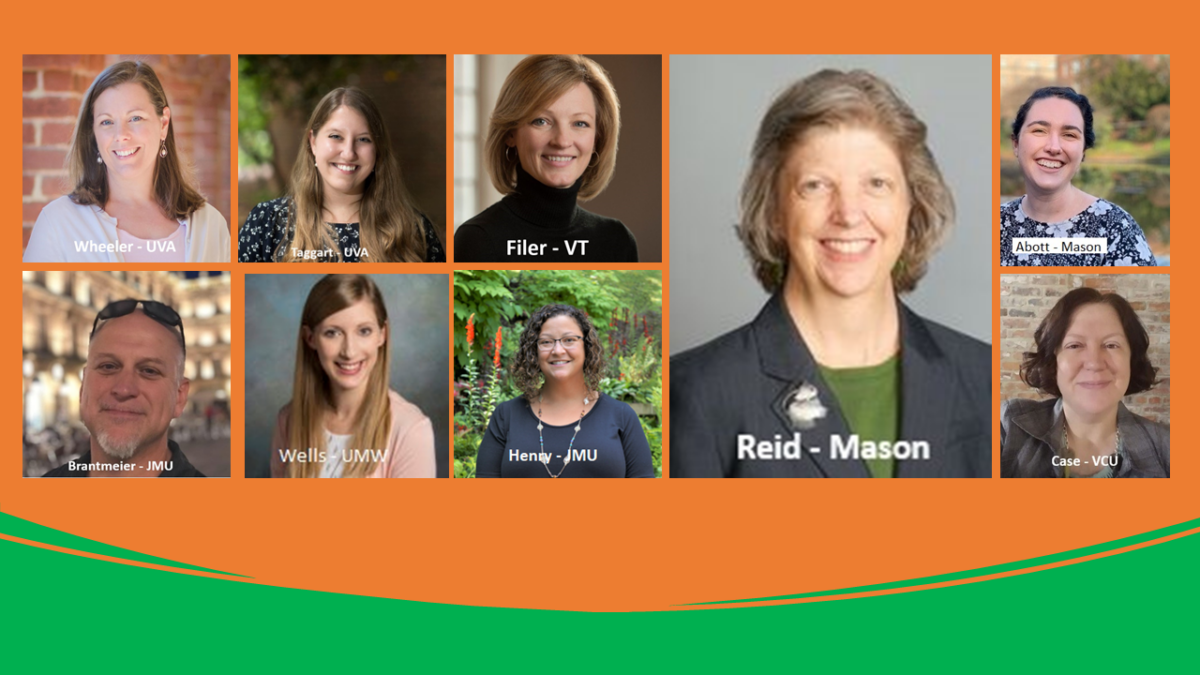
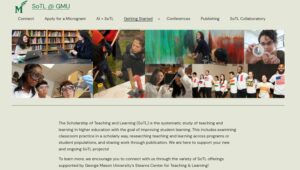 Next, the team created
Next, the team created 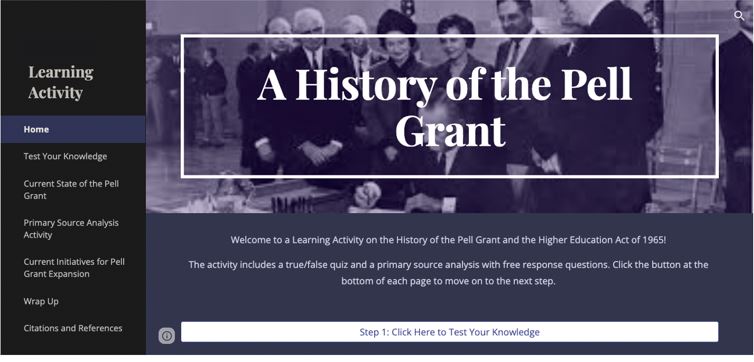
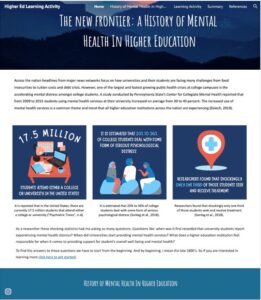 project on teaching and learning the history of higher education. Thirty-five students agreed to share their work for analysis and 24 were interviewed after completing the course. The survey and interview data made clear that students appreciated the value and relevance of studying the history of higher education for both their curricular and professional goals. One student explained, “We were able to take what we learned in the course and apply it to the project in a way that was very effortless, and that really helped me think about history in a different way.”
project on teaching and learning the history of higher education. Thirty-five students agreed to share their work for analysis and 24 were interviewed after completing the course. The survey and interview data made clear that students appreciated the value and relevance of studying the history of higher education for both their curricular and professional goals. One student explained, “We were able to take what we learned in the course and apply it to the project in a way that was very effortless, and that really helped me think about history in a different way.”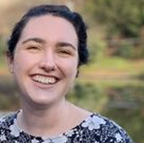
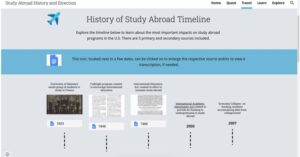 Each school contributed OER materials for the website. In addition to primary and secondary sources, the website now contains a database of institutional archives with digitized content, including yearbooks. Thanks to the two undergraduate research assistants, Azamy and Tcheo, over 700 institutional archives were cataloged on the site, including 48 Hispanic-serving institutions (HSIs), 24 historically black colleges and universities (HBCUs), and 15 women’s colleges. Additionally, the list includes 63 community colleges which is especially important given the lack of attention to these institutions historically.
Each school contributed OER materials for the website. In addition to primary and secondary sources, the website now contains a database of institutional archives with digitized content, including yearbooks. Thanks to the two undergraduate research assistants, Azamy and Tcheo, over 700 institutional archives were cataloged on the site, including 48 Hispanic-serving institutions (HSIs), 24 historically black colleges and universities (HBCUs), and 15 women’s colleges. Additionally, the list includes 63 community colleges which is especially important given the lack of attention to these institutions historically.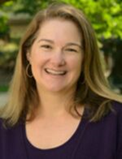 “This 4-VA project fostered meaningful and lasting collaboration across five Virginia institutions. While each university approached the history of higher education course from its own perspective, we were able to work together on a shared assignment that allowed for a rich learning experience among faculty and students across campuses. The results speak for themselves!” – Kelly Schrum, Professor, Higher Education Program, Affiliated Faculty, History and Art History, Mason
“This 4-VA project fostered meaningful and lasting collaboration across five Virginia institutions. While each university approached the history of higher education course from its own perspective, we were able to work together on a shared assignment that allowed for a rich learning experience among faculty and students across campuses. The results speak for themselves!” – Kelly Schrum, Professor, Higher Education Program, Affiliated Faculty, History and Art History, Mason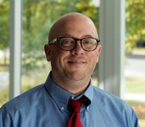 “I sincerely appreciated having an opportunity to collaborate with colleagues across the state for this 4-VA project. Through our conversations and research, I developed new pedagogical approaches that benefited students and deepened my thinking about the history of higher education.”
“I sincerely appreciated having an opportunity to collaborate with colleagues across the state for this 4-VA project. Through our conversations and research, I developed new pedagogical approaches that benefited students and deepened my thinking about the history of higher education.”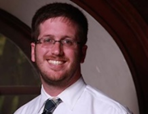 “We really enjoyed being part of this effort to expand student research on the history of higher education. Everyone came away from this project with a deeper understanding of how important it is to develop critical thinking skills and to look beyond our own institutions.”
“We really enjoyed being part of this effort to expand student research on the history of higher education. Everyone came away from this project with a deeper understanding of how important it is to develop critical thinking skills and to look beyond our own institutions.”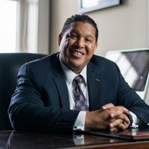 “The website, which holds a treasure trove of student research and engagement from a wide range of institutions, will be invaluable as we move ahead in studying the complex and influential histories of American higher education.”
“The website, which holds a treasure trove of student research and engagement from a wide range of institutions, will be invaluable as we move ahead in studying the complex and influential histories of American higher education.” “When this asynchronous learning project was first introduced to the students, they were thrilled at the thought of not having to write a 20-page paper, however in the end, they did more work doing research on their chosen subject. They enjoyed this project because it allowed them a space for research and reflection, and it taught them how to create an interactive learning environment in an asynchronous environment. Being able to evaluate and participate in the projects created by other students in other universities across Virginia also taught them about their peers’ projects, too.”
“When this asynchronous learning project was first introduced to the students, they were thrilled at the thought of not having to write a 20-page paper, however in the end, they did more work doing research on their chosen subject. They enjoyed this project because it allowed them a space for research and reflection, and it taught them how to create an interactive learning environment in an asynchronous environment. Being able to evaluate and participate in the projects created by other students in other universities across Virginia also taught them about their peers’ projects, too.”